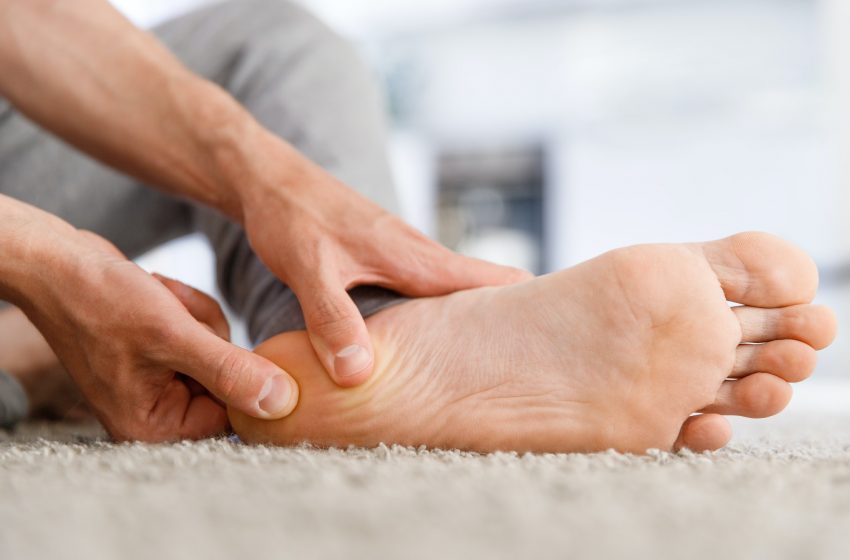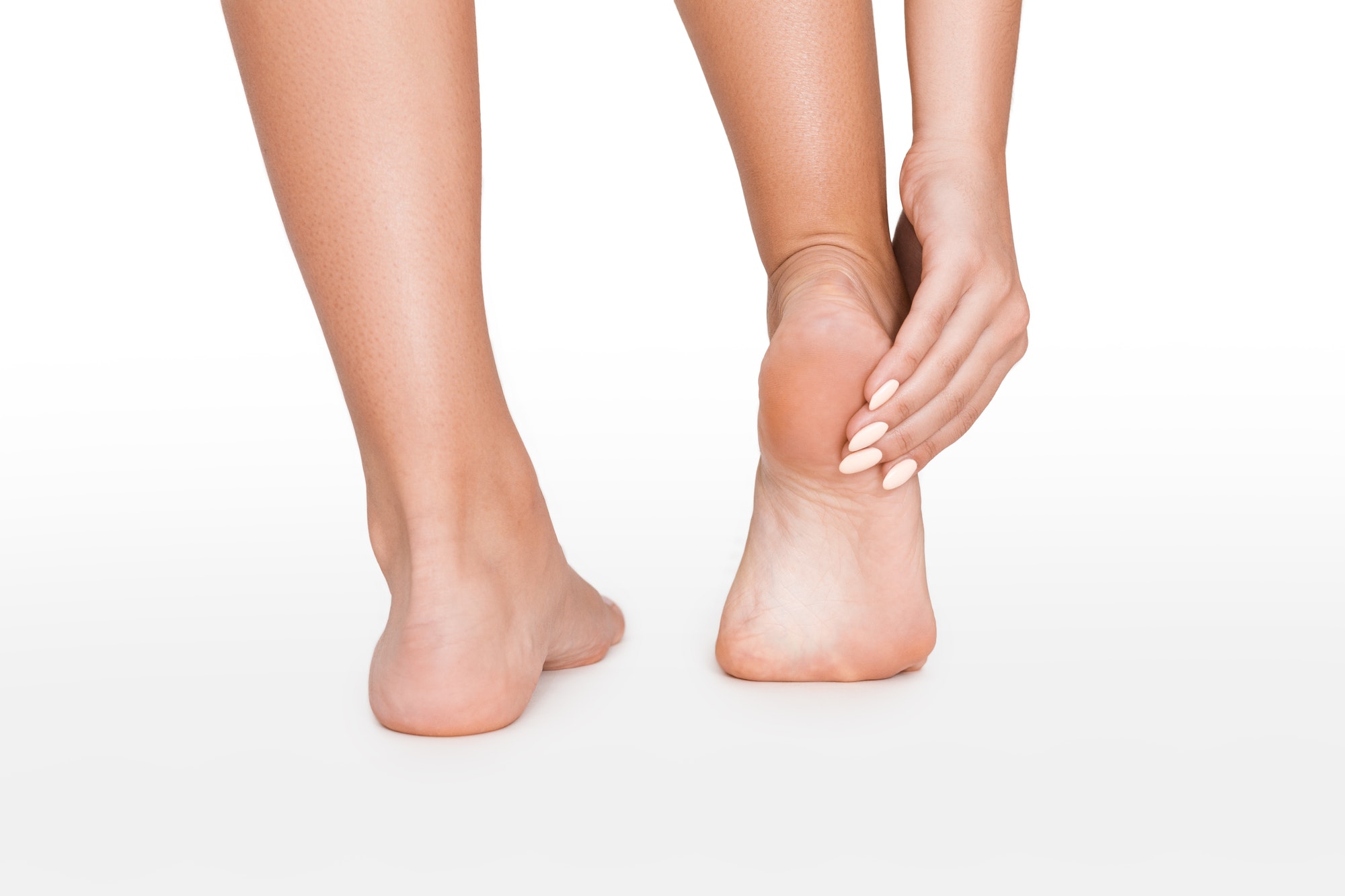
Pain On Bottom Of Heel | The 7 Possible Causes and Treatment
Pain on bottom of heel may be associated with numerous conditions. Since this is the case, it would be wise to check the various conditions to determine the problem.
The heel carries a tremendous amount of our body weight; we can’t overlook its importance, so the best thing to do would be to check for the cause.
There are simple ways to know what causes heel pain. It usually takes some research, but the information is readily available. Accurate data is the determining factor in solving this problem, and we have plenty of that to share.
It doesn’t mean that this should replace a doctor’s visit; it just helps in critical circumstances.
You need to know a few things before you start treating yourself. Some conditions may require a simple method, while others require expert assistance.
The best way to know the difference? Use this information wisely and make the best decision possible.
Consider all the symptoms you have and compare them with what has been shared. Eliminate anything that doesn’t fit the bill. Look at the remaining causes to see if you can make a list smaller before attempting any treatments.
If in doubt, consult a physician for guidance; that is always the safest way.

Contents
Pain On Bottom Of Heel – The Leading Causes
Bone Tumor
A bone tumor can cause pain in the heel, and the cause of this condition is unknown. Possible reasons could be an injury, bone disease, radiation treatment and genetics.
The symptoms of a bone tumor are a pain in the heel, fatigue, and fractures. Other symptoms are unplanned weight loss, swelling and tenderness in the heel.
The treatments for this condition are surgery to remove infected bone. Other treatments are chemotherapy and radiation therapy. Since the issue causes pain, you may have t take pain medication.
Stress Fractures
Your heel is used regularly, making it a vital body part for everyday use. When you walk and run, the heel is very active and can suffer damage without you knowing.
Doing heavy activity can result in unnoticed fractures until the fracture becomes stressed.
Symptoms of a stressed fracture are consistent pain in the heel and tenderness in the bone. However, the pain can start with activity and stop after activity, so be aware of this.
Other symptoms are swelling in the heel with tenderness to the touch.
Treating this condition requires pain medications to help ease the pain. Other treatments are resting from activities for about two months. This requirement will depend on the severity of the issue.
Other treatments are icing the area for ten minutes twice per day.
Sarcoidosis
Sarcoidosis disease results from granulomas developing in clusters in the heel. This condition can also happen anywhere in the body and is very painful. Granulomas are inflammatory cells that develop pain as they increase in amount.
Symptoms of sarcoidosis are fever, weight loss, fatigue, and night sweats. Other symptoms are joint pain, swollen lymph nodes, and pain in the heel.
Treatments for this condition are corticosteroids; this drug can bring relief after a few months. Other treatments are immune system suppressant medication and antimalarial drugs.
Pain On Bottom Of Heel – Other Causes
The pain at the bottom of your heel can be related to bone, nerves and other types of cells in your body. As you continue your research, you will be amazed at the conditions related to heel pain.
This problem can go way beyond an injury. Since this can be the case, it would be wise to consider every cause shown. Here are some more causes of heel pain.
Heel Spur
A heel spur can be very painful and could be why you are experiencing such pain. Heel spurs occur when calcium accumulates under the heel bone. The ligament becomes strained and causes severe pain.
Symptoms of heel spur are pain at the bottom of the heel and a small protrusion at the heel bottom. Other symptoms are swelling around the heel and dull aching pain.
Treatments for this condition are special footwear and plenty of rest. Other treatments are ice packs on the area and taking anti-inflammatory medicine.
Haglund’s Deformity
Haglund’s deformity is another condition that can result in heel pain. The heel bone can have an abnormality that makes the tendon around the area sore. The deformity can be easily seen.
Symptoms of Haglund’s deformity are high arched feet and a tight Achilles tendon. Some of the other symptoms are walking on the outside of the heel. You will notice a bump at the back of the heel that is painful.
Swelling and redness are also present.
Treatments for this condition are surgery to remove the bone causing the pain. Wearing a cast after the operation will be necessary. Other symptoms are pain medication and icing, and elevating your foot.
Osteomyelitis
Another infection type can be responsible for the pain you feel in your heel. The infection in the bone called osteomyelitis affects the bone causing discomfort. The leading cause of infection is an injury left untreated.
Symptoms of osteomyelitis are redness, swelling and pain in the affected area. Other symptoms are fever and feeling unwell. If children are affected, they become irritable.
Treatments for this condition are removing the bone via surgery and draining the area. In some cases, the body part is amputated, and blood restoration to the area.
Bursitis
Bursitis can result in pain under the heel. The inflammation of the sacs that protect the Achilles is swollen. The bursa is behind the heel, but the pain cane reaches the heel’s bottom.
Symptoms for bursitis are skin color change and heel warmth to the touch. The heel can become painful with swelling and hurt when you tiptoe.
Other Conditions To Consider
There are a few other conditions to consider, similar to sharp needle-like pain in the foot. The illnesses are tarsal tunnel syndrome, arthritis, peripheral neuropathy, and retrocalcaneal bursitis.
Other diseases are Achilles tendon rupture and retrocalcaneal bursitis. Paget’s disease of bone can also be considered.
The pain on bottom of heel shows how serious this can be. It can require some serious attention or may require the R.I.C.E method. Always approach any condition you have by consulting your doctor first. Anything else should be secondary.
